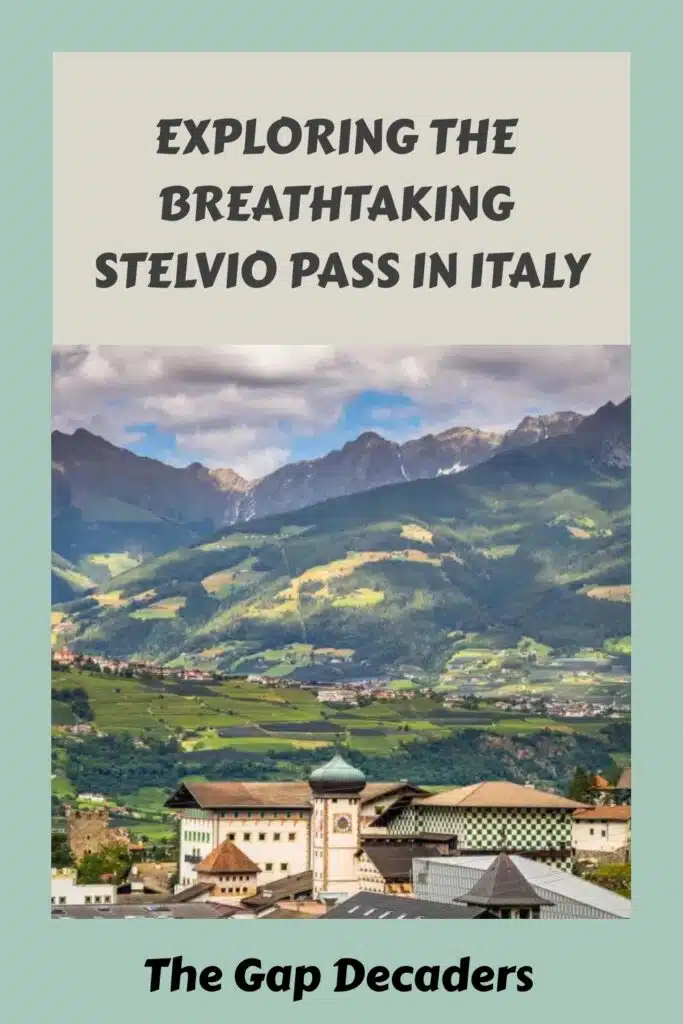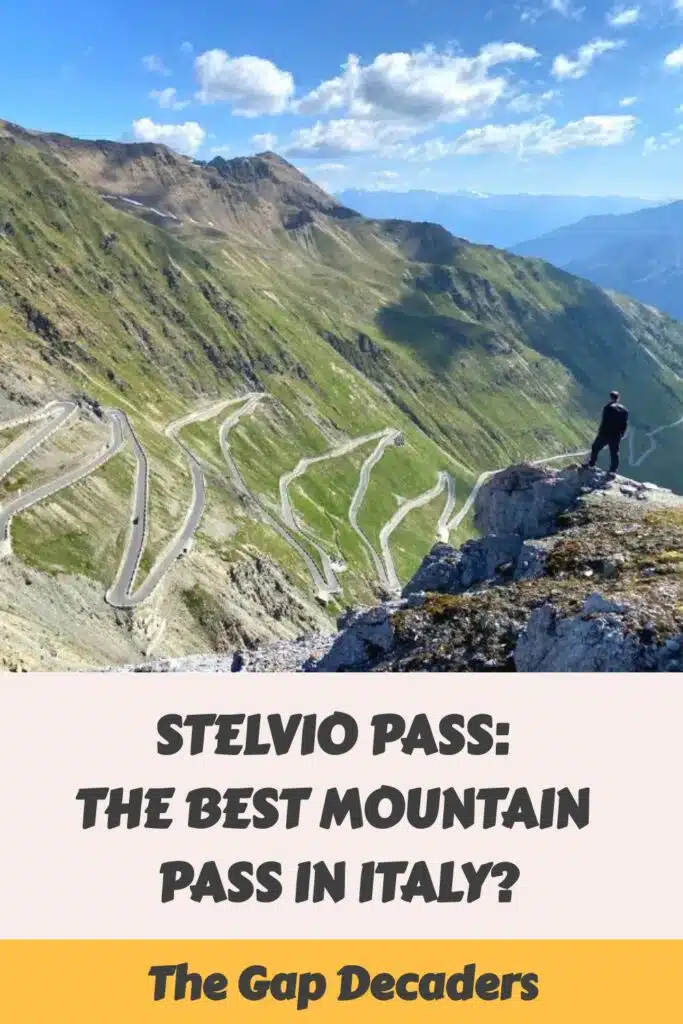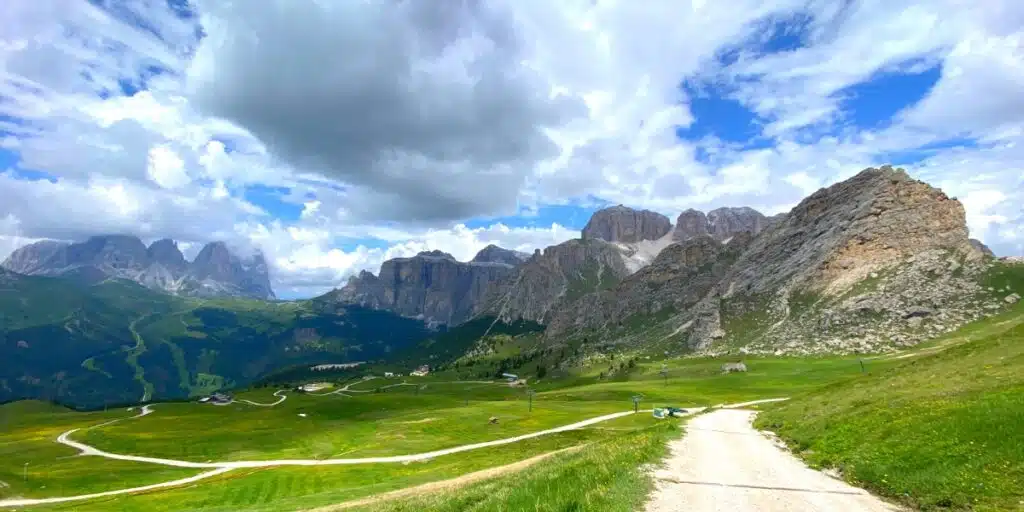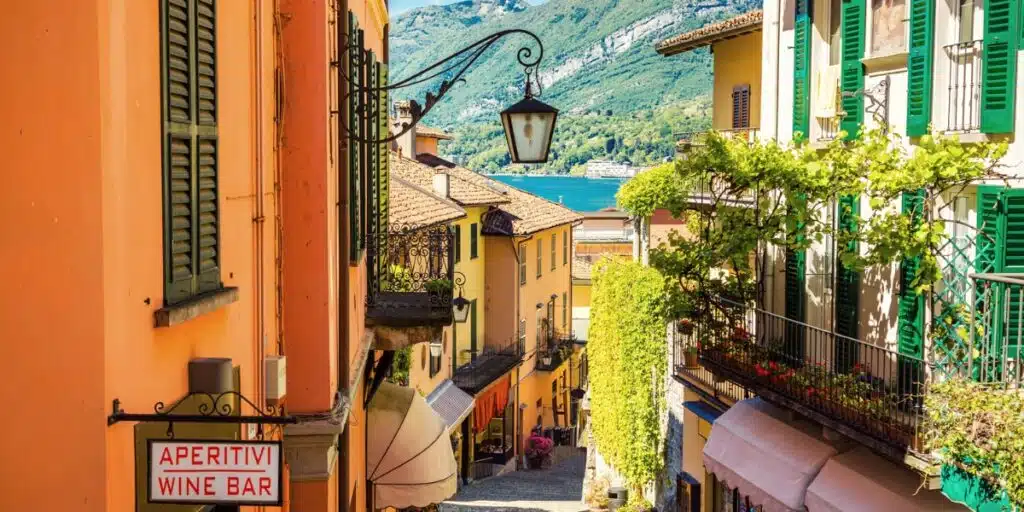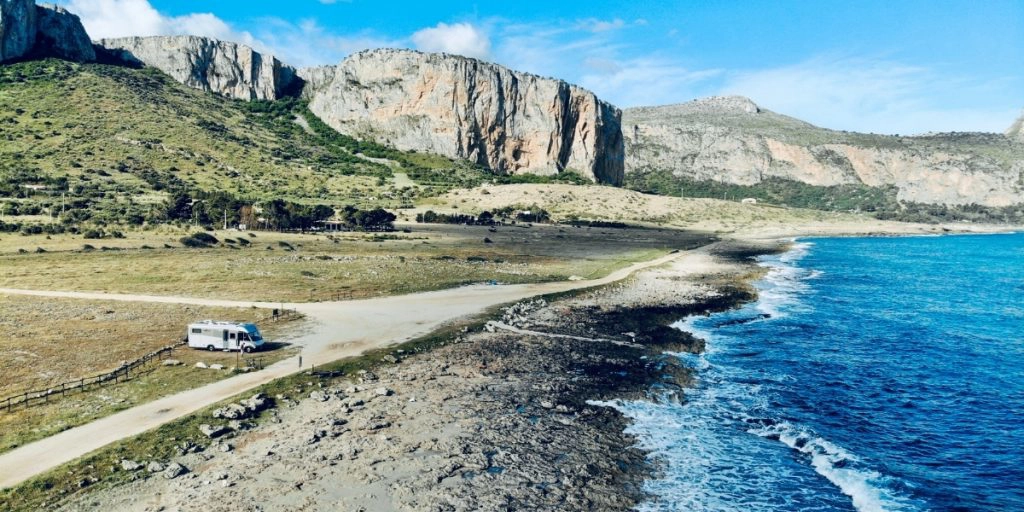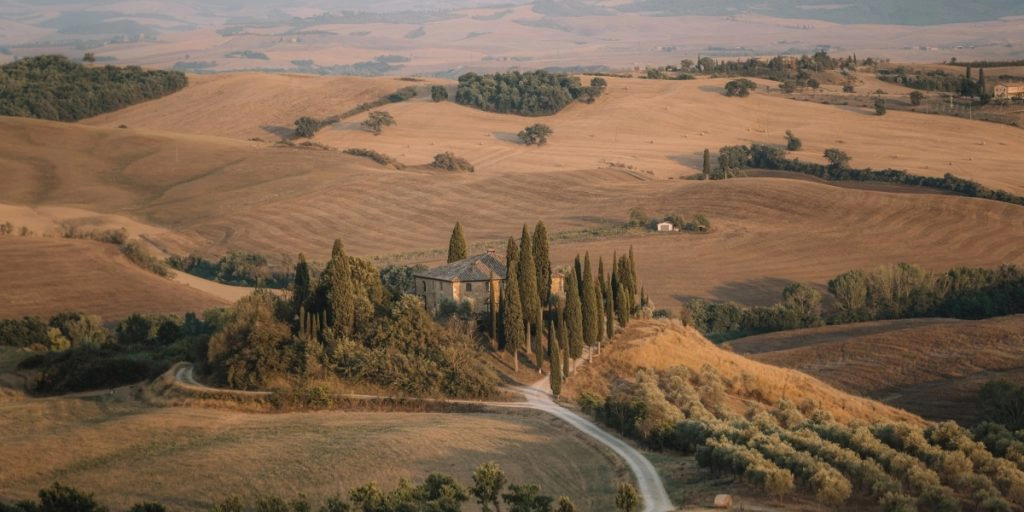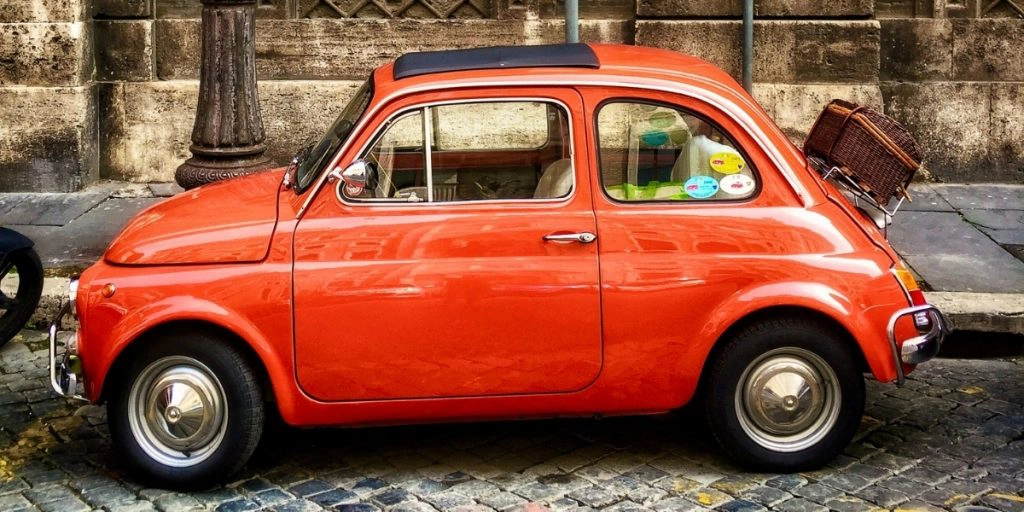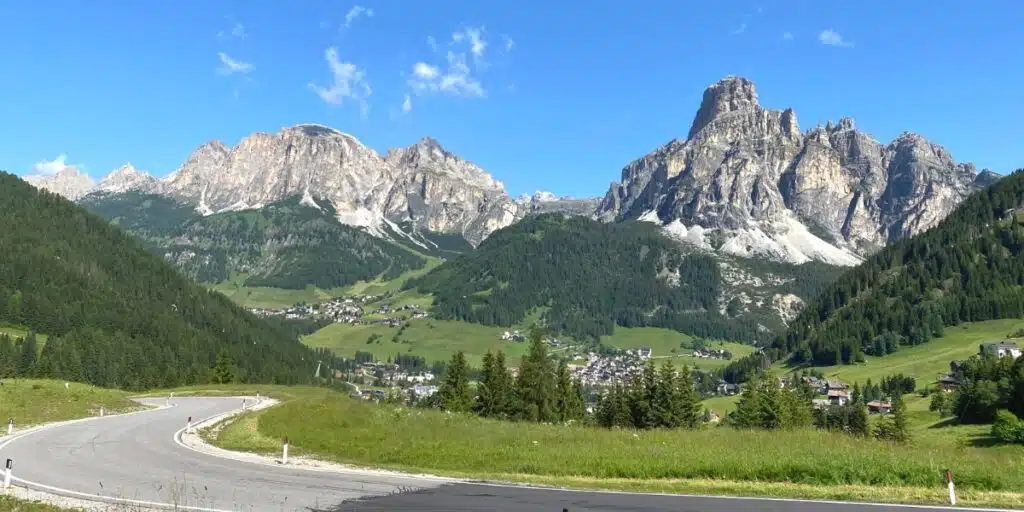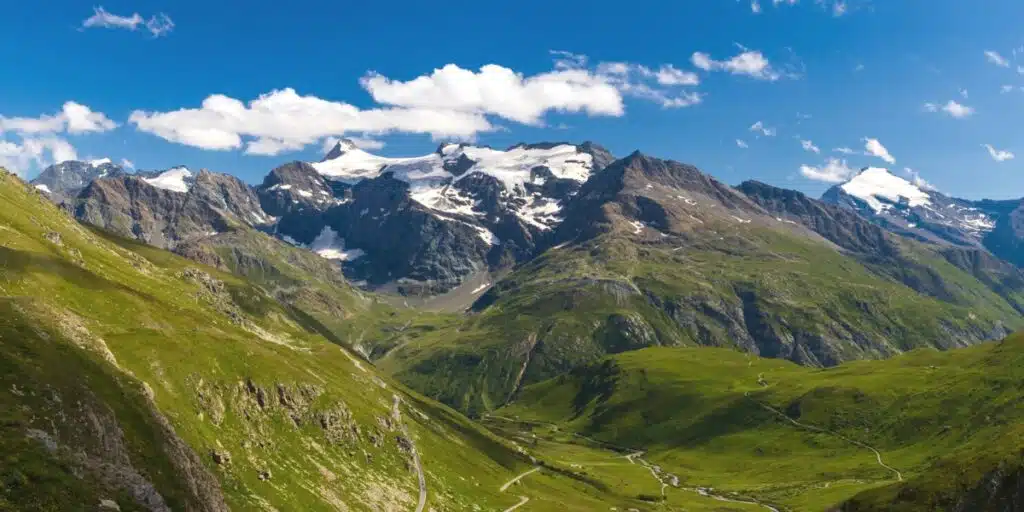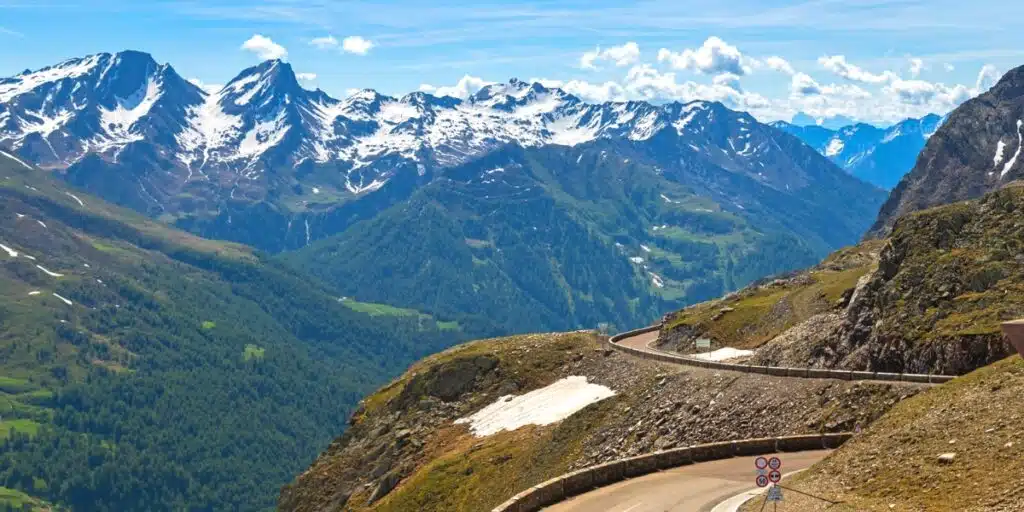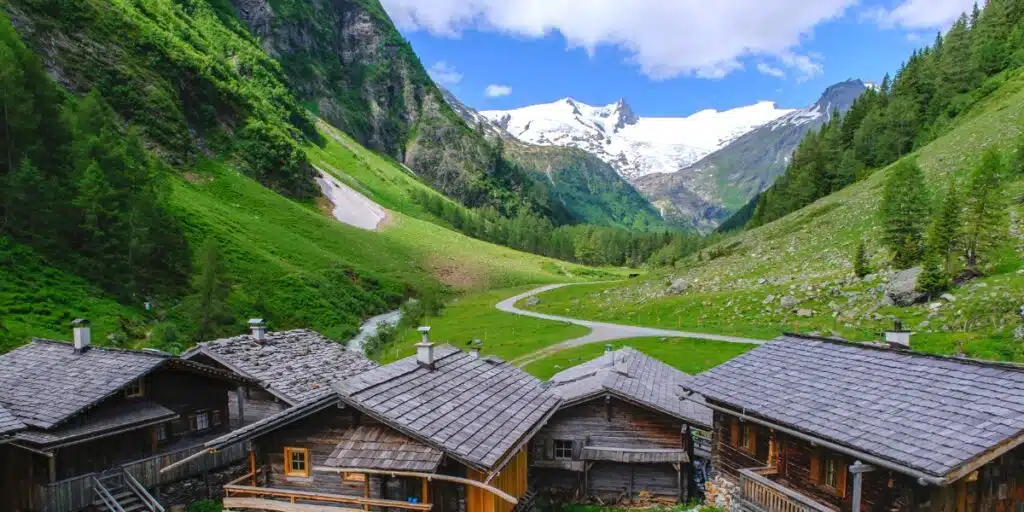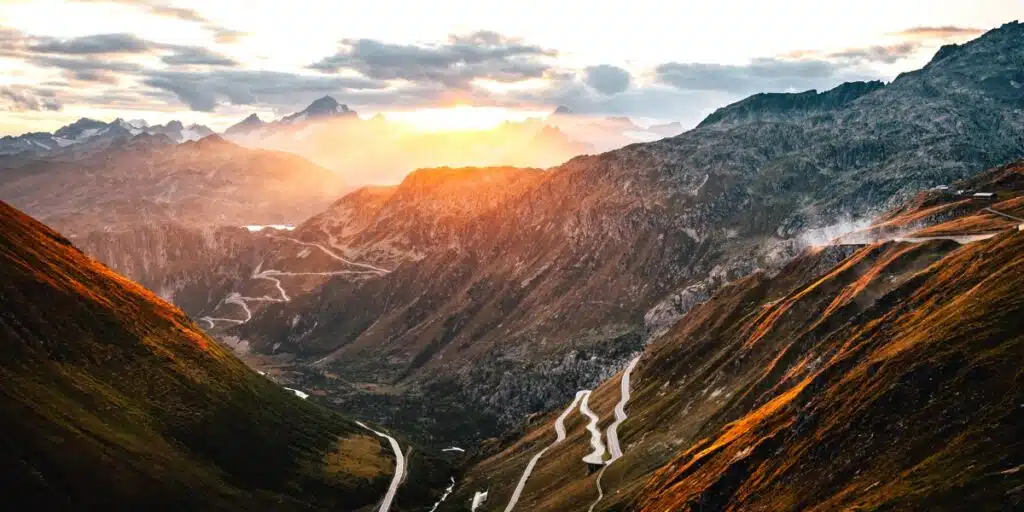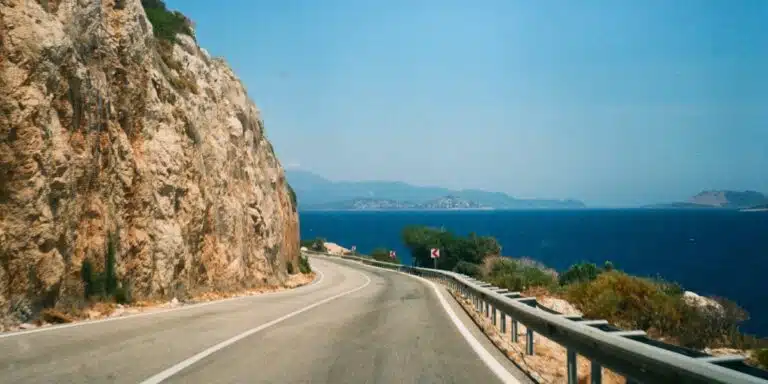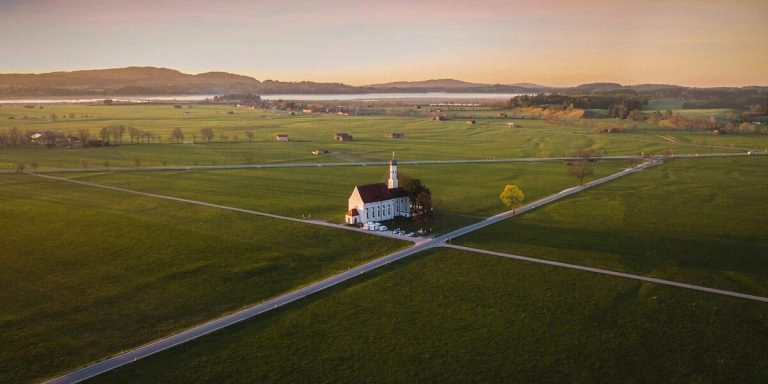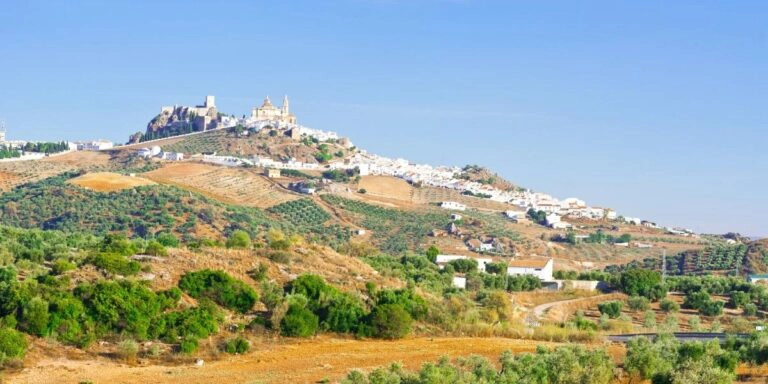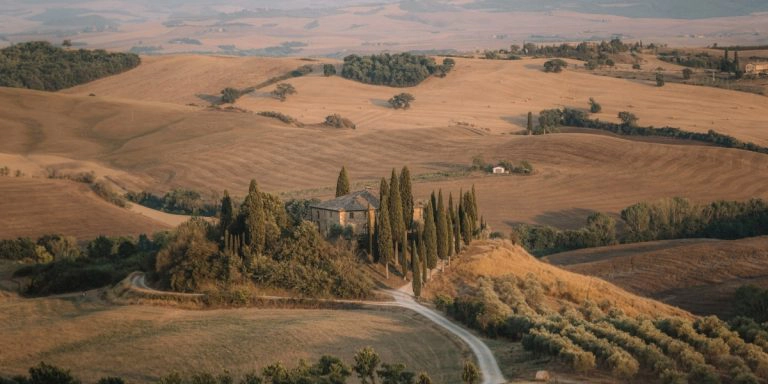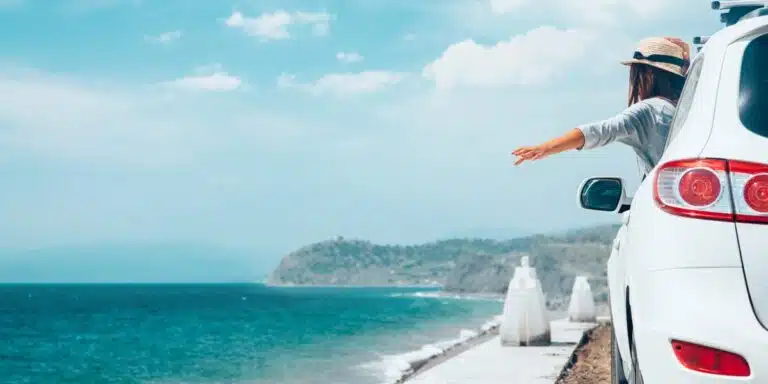This post may contain affiliate links, from which we earn an income. Click here to read our affiliate policy.
A truly iconic Italian road, the Stelvio Pass is a bucket list drive. High in the Ortler Alps, the pass is the stuff of legends, with hairpin bends, tunnels, and of course spectacular views, along the 47-kilometer route.
We’ve tackled the Stelvio from both north and south, in a motorhome, on a BMW GS Adventure, and even on a Honda PCX125 – yes, a scooter! Offering a true sense of adventure, the Passo de Stelvio is an essential experience for petrolheads, cyclists, and road trippers.
In our Stelvio Pass guide, we’ll share all you need to know about driving this incredible mountain route between Bormio and Prato Allo Stelvio. So, pack your bags and get ready to discover the Stelvio Pass, one of Italy’s best driving roads.
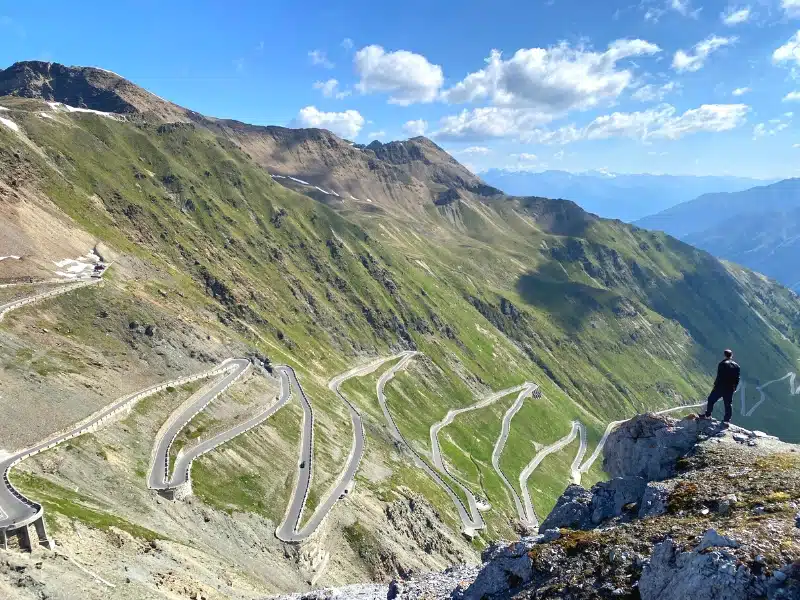
What is the Stelvio Pass in Italy?
The Stelvio Pass (Passo dello Stelvio in Italian, Stilfser Joch in German) is a mountain road in Bolzano in Northern Italy. The highest paved mountain pass in the Eastern Alps, and the second highest in the Alps, just 7m (23 ft) below France’s Col de l’Iseran, the Stelvio Pass reaches an altitude of 2,757m (9,045 ft).
The road spans 47km / 29 miles between Prato Allo Stelvio in the north and Bormio in the south as it winds its way through the majestic South Tyrol, right on the border with Switzerland.
Officially designated as the Strada Statale 38 or SS38, this remarkable mountain road was built between 1820 and 1825 by the Austrian Empire to connect the former Habsburg possession of Lombardy with Austria.
The pass is known for its challenging 60 hairpin turns (tornanti in Italian, kehre in German) 48 of which are on the northern side and numbered with markers at each bend.
Today, this picturesque and exhilarating journey attracts drivers and riders worldwide, as they come to experience the incredible Alpine scenery and breathtaking route.
Is this your first time visiting Italy? Get all the information you need in our Italy Travel Guide, including the best things to pack, the best time of year to go, getting there, and practical tips to help you have the best trip!
History of the Stelvio Pass
The original state road SS38 was finished by the engineer and project manager Carlo Donegani in 1825. Since then, the route has changed very little.
Before the end of World War I, the pass formed the border between the Austro-Hungarian Empire and the Kingdom of Italy. During World War I, fierce battles were fought in the ice and snow of Dreisprachenspitze, with gunfire even crossing the neutral Swiss area. After 1919, with the expansion of Italy, the pass lost its strategic importance.
Since then, the Stelvio Pass has been crossed by numerous cyclists and motorcyclists, aiming to get to the highest stretch of road in the Eastern Alps. It is the highest finish of any Grand Tour and the Giro d’Italia often crosses the Stelvio Pass.
In 2007, the Stelvio Pass was also a favorite of BBC’s Top Gear as its choice for the ‘greatest driving road in the world’ in the 10th series but was later relegated to second position by the Transfagarasan Highway in Romania. To be honest, we think that was the wrong decision!
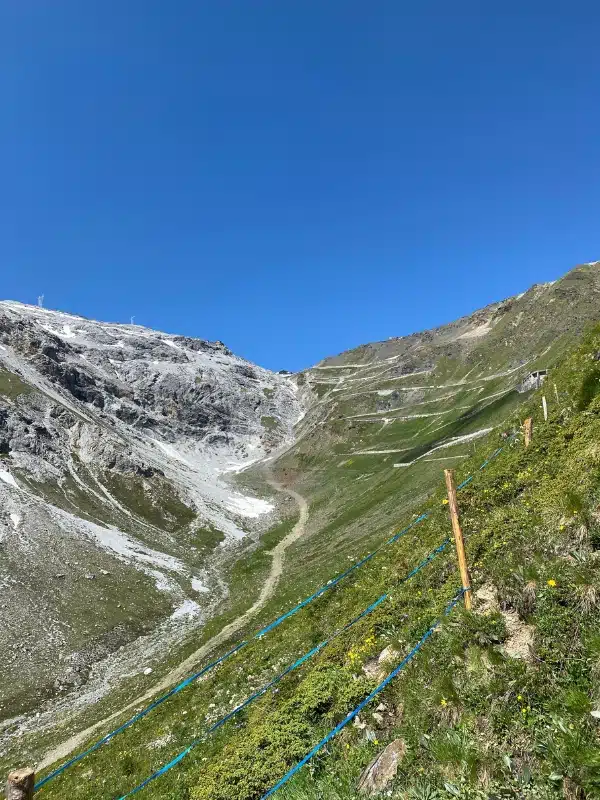
Make sure you have travel insurance you can trust when visiting Italy. We recommend True Traveller for their 5-star TrustPilot reviews, variety of cover options, best activities cover as standard, great prices, and excellent service.
Getting to the Stelvio Pass
Fly to Italy
If you want to fly in and hire a car, the nearest airport to the Stelvio Pass is Bolzano Airport 42 miles (69km) away from the north side starting point in Prato Allo Stelvio.
Other airports within easy reach of the south side of the Stelvio Pass include Milan Bergamo, Verona, and Venice Treviso.
Drive to Italy
Why not take your own car, motorbike, or camper to the Stelvio Pass and enjoy an Italian road trip? Italy is easily accessible from Western and Northern Europe via Austria or Switzerland.
If you’re planning on driving to Italy from the UK, we’ve got all the best routes plus lots of tips to help you pick the right one!
Don’t forget your road trip essentials! Our free road trip checklists help you remember everything, including road trip snacks, podcasts, and road trip songs for the journey!
Self-Driving the Stelvio Pass
Whether you’re in a car, motorcycle, campervan, or motorhome, self-driving is absolutely the best way to explore Italy’s Stelvio Pass. You can stop whenever you want, try new activities, visit places you see along the route, and have the freedom to change plans at the last minute.
Are you planning to rent a car in Italy? As one of the largest car hire aggregator companies in the world, we recommend Rentalcars.com because they have massive purchasing power which enables them to secure the best rental car prices, which benefits you when you’re planning your Stelvio Pass drive.
For a real adventure, hire a motorhome or campervan in Italy. We recommend Motorhome Republic, an aggregate booking site who pull together all the best deals from a number of rental agencies, to offer you a wide choice of options alongside an excellent English speaking expert motorhome Concierge Team.
Stelvio Pass Map
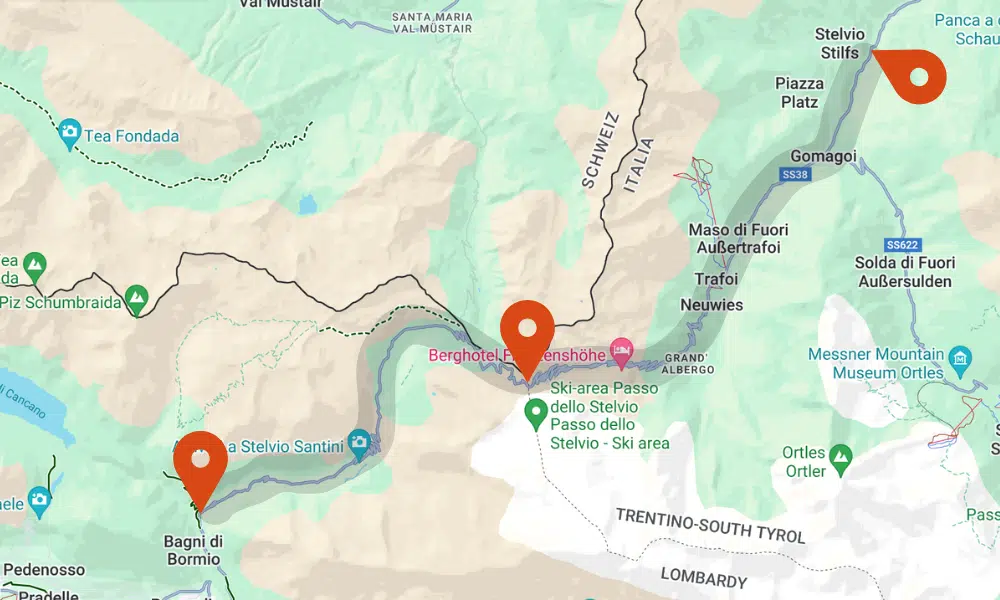
When is the Stelvio Pass Open?
The Stelvio Pass is a seasonal route and is only open to traffic between late May and the end of October. The road closes around 1st November mostly due to snow blocking the way and reopens around 1st June, or earlier if weather permits.
The first time we traveled the Stelvio Pass on a motorbike, we left Bormio in gorgeous weather on 7th June and there was still plenty of snow at the top of the pass. Always check the weather conditions before setting off, and the current status of the road at Bormio.eu.
The road can get very busy at the weekends in summer, with larger vehicles causing hold-ups as they maneuver around the tight bends. Start your trip early or go on a weekday if possible.
Don’t go on the last Saturday of August though! On this day every year, the Stelvio Pass is closed to traffic as 12,000+ cyclists celebrate Stelvio Bike Day, or Scalata Cima Coppi, by riding the pass south and descending over the Umbrail Pass to Val Müstair.
You also need to watch out for the Stelvio Marathon, now known as the Stelvio Trail Run, that takes place in July every year. This 21km (13 miles) run is mostly off-road but the last 7km of the pass on the north side may close.
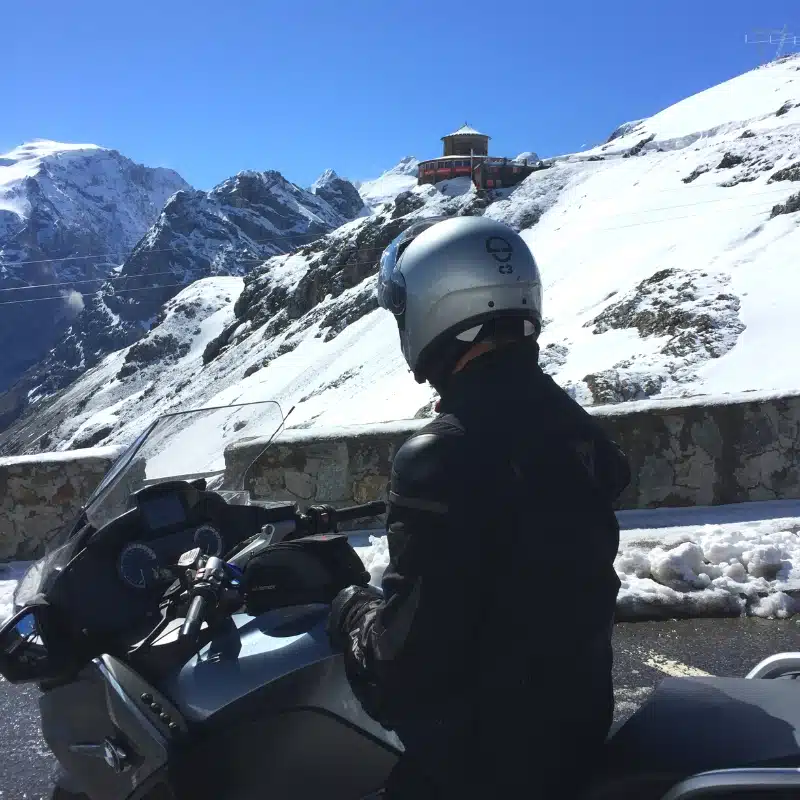
Looking for the best SIM card deals in Europe for your trip? Check out our guide to the best data SIMs in Europe and get the best deal for your trip to Italy.
Is the Stelvio Pass a Dangerous Road?
If you’re an inexperienced rider or driver then yes, the Stelvio Pass can be dangerous. Even the famous racing driver Sterling Moss had an accident on the Stelvio in the 1990s when the car he was driving left the road.
That is unusual though, and you’d have to be traveling at high speed or for your brakes to fail for that to happen. Much of the danger lies in the very tight 180-degree switchback turns along the road: 60 in total, with the north side boasting 48 of them.
Take one of these too fast in a car and you’ll hit the wall or barrier. On a motorbike, the danger is going too slowly, especially if ascending on the north side from Trafoi.
Because of the often busy road, riders of heavily laden bikes stopping on the hairpins can find that due to the extreme camber of the road, there is nothing there when they put their foot down if forced to stop. The bike then tips and is too heavy for the rider to keep it upright.
Every time we’ve crossed the Stelvio Pass, we’ve seen numerous bikes being dropped. Usually, no one gets hurt, but the rider’s pride takes a knock and the bike can get damaged. Some heavier models need three of four people to lift them back up!
Watch Us Ride the Stelvio Pass on a Scooter!
Are There Any Restrictions on the Stelvio Pass?
Yes, there are vehicle restrictions on the Stelvio Pass.
Vehicle length is limited to 10.5 meters (34.4 ft) on the north side of the pass from Prato Allo Stelvio.
On the south side from Bormio, vehicles must not exceed 3.3m (10.8 ft) in height due to the rock-cut tunnels and gallerias on the route. This Stelvio Pass height restriction could be a problem for over-cab and large A-class motorhomes and overland trucks.
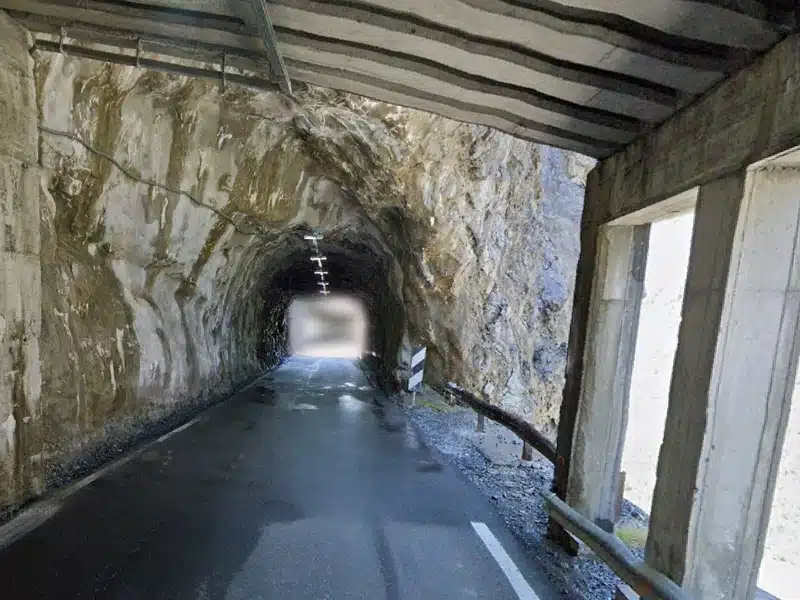
Which is the Best Direction for the Stelvio Pass?
Whether you start in Prato Allo Stelvio or Bormio, you’ll experience the adrenaline rush and excitement of navigating one of Europe’s best driving roads.
But we think traveling from south to north just tips the scales due to the spectacular view along the Venosta Valley, with the road laying itself out along the mountainside for the perfect photo opportunity. But, you can always turn around and take those photos if you come in the opposite direction.
On both sides of the pass, you’ll spot professional photographers like FotoStelvio and Kanyarfoto waiting at the switchbacks to capture images, which you can then buy online. The most famous of these spots is Waterfall Curve on the south side, where the canny photographers can capture the vehicle with the waterfall in the background.
Other Road Trips Nearby
Stelvio Pass Highlights
Whether you’re driving, riding, cycling, or even running, the highlights along the route are the same! There are numerous places to stop for photos and admire the majestic scenery, which is why we suggest allowing five to six hours to drive the 47km route.
Prato Allo Stelvio
Prato Allo Stelvio in Italian and Prad am Stilfser Joch in German, is a small village at the very north of the Stelvio Pass in the Val Venosta. Often referred to as Stilfs or Prad, the lively village serves as a start or finish point for races and events.
Deep in the Stelvio National Park, the village is the ideal starting point for some of the best hikes and mountain climbs in the entire Alps, and offers a perfect spot to spend a few days exploring the area.
Make sure to visit the ruins of 11th century Montechiaro Castle (Castello Di Montechiaro in Italian, Schloss Lichtenberg in German) perched high in the local mountains. The castle is known for minnesang (meaning ‘love song’ in German) a courtly tradition of lyric and song popular in the Middle Ages in Germany and Austria
The castle’s tradition remains visible in the traces of lavish frescos from the heyday of the courts. Most of the frescos were removed in 1912 and transferred to the Ferdinandeum Tyrolean State Museum in Innsbruck.
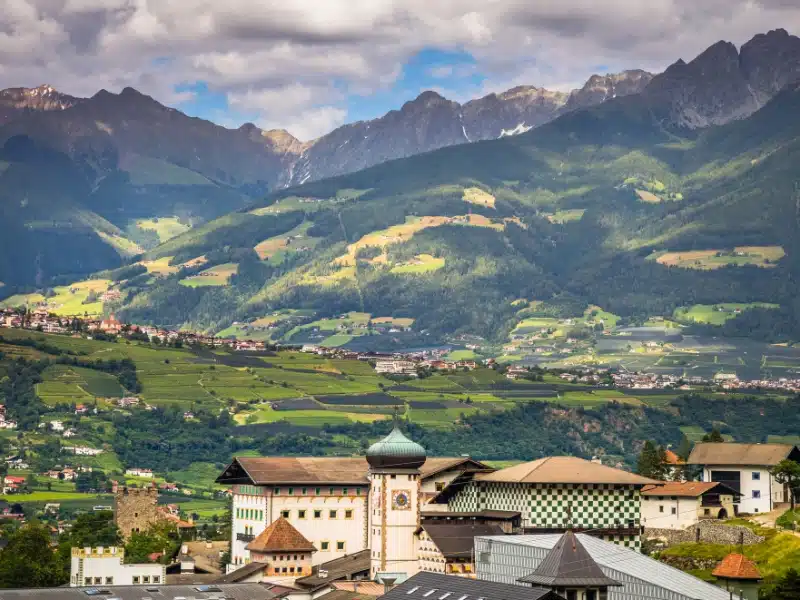
Trafoi all’Ortles
A few kilometers south is Trafoi, a quaint mountain village at the foot of the Ortles, with a population of just 90. Another popular starting point for driving the Stelvio Pass, Trafoi offers excellent conditions for summer hikers and climbers.
If you’re just passing through or stopping for a night, make sure to visit the incredibly picturesque Pfarrkirche Trafoi and the Church of the Sacred Three Fountains (Hl. Drei Brunnen in German, Tre Fontane Sacre in Italian). The riverside church is the subject of a legend dating back to the 13th century.
According to the tale, a shepherd witnessed three rivulets of water emerging from rocks, each bearing a cross. The shepherd managed to save two crosses, but the third was swept away. Today, one cross rests in the Stelvio Parish Church, while the other resides in the St. John Church in Tubre.
This beautiful location evolved into a pilgrimage site by the 15th century, with a small chapel erected to commemorate the special events. The springs are believed to possess healing properties, evident from the numerous wooden prostheses within the church.
A well-house nearby depicts the legend through statues of the Virgin Mother, Jesus, and Saint John. Additionally, a fountain with three rivulets stands before the church, offering a breathtaking view of the surrounding peaks, including the majestic King Ortler at 3,905m (12,812 ft) above sea level.
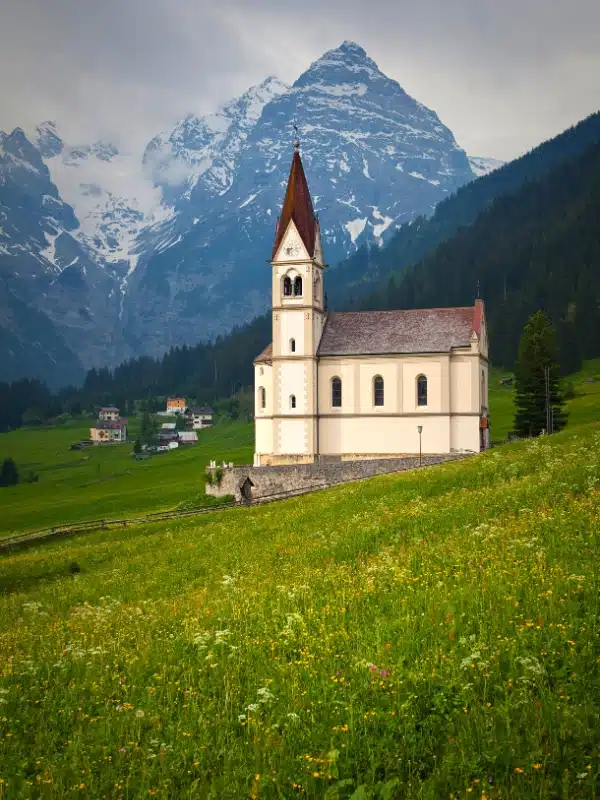
Berghotel Franzenshöhe
Not only is the Berghotel Franzenshohe a great spot to stay before or after your Stelvio adventure, but it’s also a popular fixture on the route where people stop for a meal or coffee.
The views along the pass are unrivalled and you can watch cars and bikes coming and going from top to bottom!
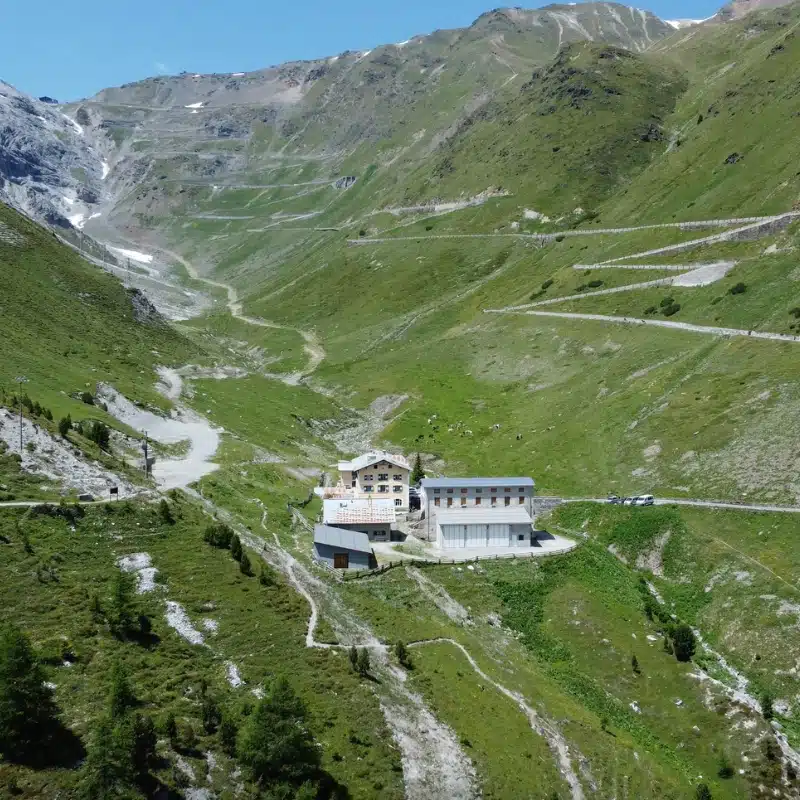
The Summit
Once you’ve negotiated those 48 hairpin bends you’ll arrive at the top of the pass, and it will feel noticeably colder, so make sure to bring a few layers. Like most Alpine passes, it’s not the prettiest place, with a few souvenir shops and cafés lining the road.
You must get the obligatory photo of the Bormio and Passo dello Stelvio sign, so covered in stickers it’s almost unreadable!
Just off the pass is the Albergo Ristorante Tibet, a prominent round building perched on a rocky outcrop. It’s home to a perfectly placed outdoor deck with the most incredible views.
Walk down behind the building to access the crag where many professional photographers get the best shots of the Trafoi windings with the Austrian Zillertal peaks in the main Alpine chain making a fine backdrop.
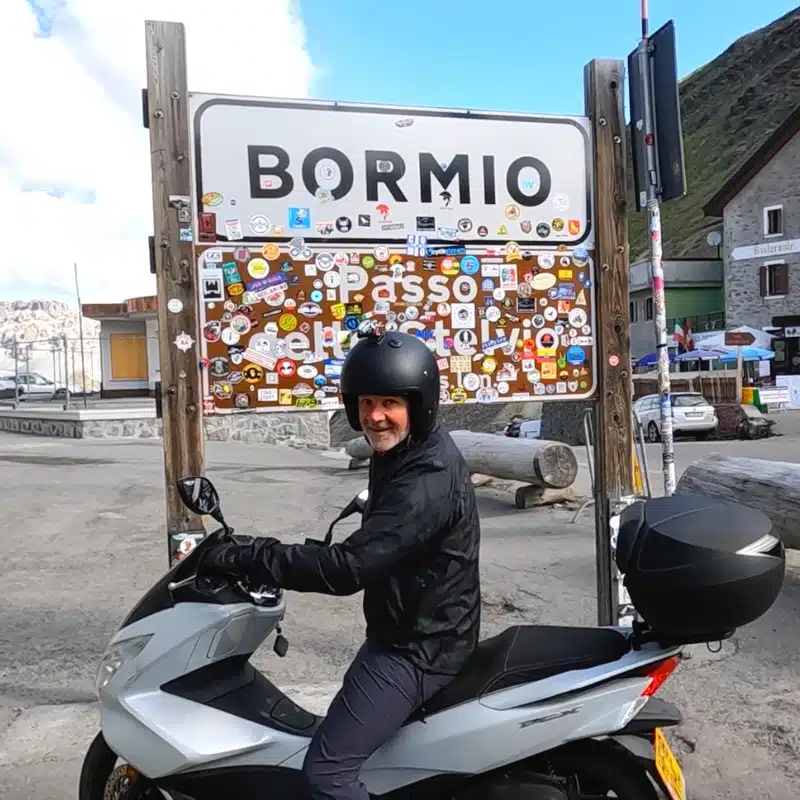
Dreisprachenspitze
Towering above the road is the Cima Garibaldi (Italian), Dreisprachenspitze (German), Piz da las Trais Linguas (Romanch), or ‘Three Languages Peak’ so named because this is where the Italian, German, and Romansh language-speaking areas meet.
You can hike up to the Rifugio Garibaldi and on to the summit on a track from the road in 10 to 15 minutes. A few meters from the hut is a religious shrine and boundary stone No. 1, which marks the border between Italy and Switzerland.
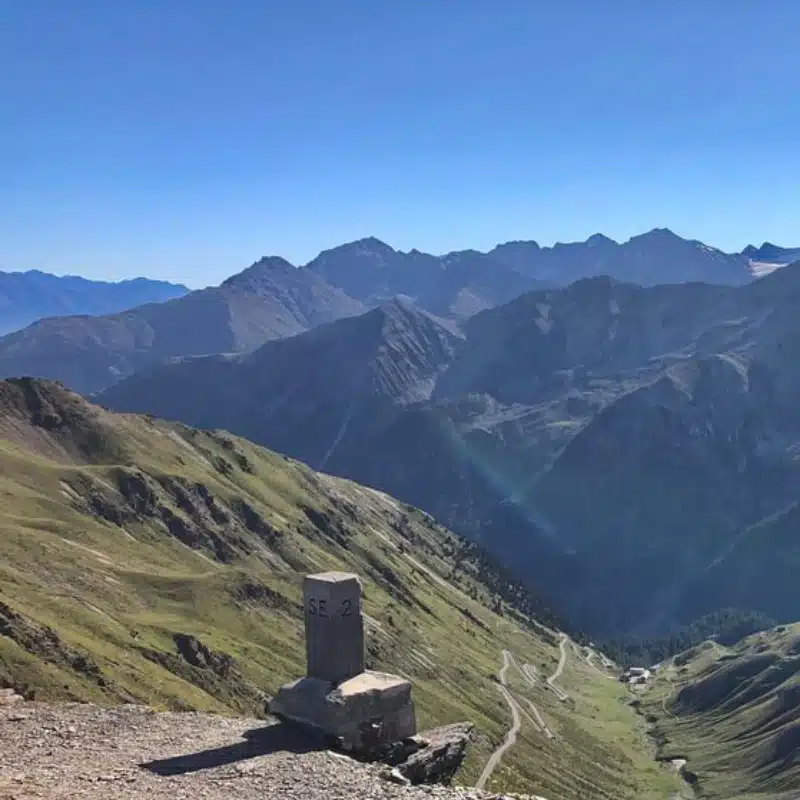
Stelvio Glacier Ski Area
There are plenty of places to stop and have a wander, and you can even go skiing! The Stelvio Glacier ski area is open year-round with 100% natural snow, other than in 2017, when the slopes closed because of a heatwave!
The Stelvio ski area offers more than 20km (12 miles) of pistes to suit all abilities and six ski lifts, taking you from a height of 2,757m (9,045 ft) at the Stelvio Pass up to 3,450m (11,319 ft) on Monte Cristallo.
If you don’t want to ski, it’s fun to take the cable car ski lift to Trincerone and onto the ski slopes of Livrio where you can have lunch or grab a hot chocolate in the hotel at 3,174m (10,413 ft) above sea level!
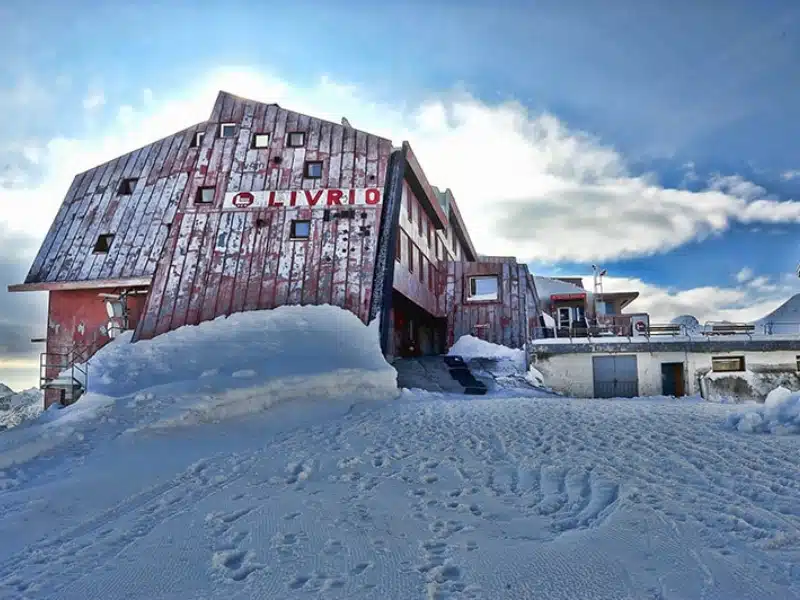
Umbrail Pass
The Umbrail Pass branches north from the Stelvio once you’re over the summit and reaches an elevation of 2,501m (8,205 ft), making it the highest paved road in Switzerland.
The pass crosses the Italian-Swiss border a few hundred meters after turning off the Stelvio and connects Santa Maria in Val Müstair with Bormio in the Adda Valley.
The spectacular 13.2km (8.2 miles) pass is named after Piz Umbrail, a nearby mountain peak, and boasts 35 steep hairpin turns. The road is quite narrow in places and in some areas, there are vertical drops of hundreds of meters and no guardrails. It’s a lot quieter than the Stelvio, and just as spectacular.
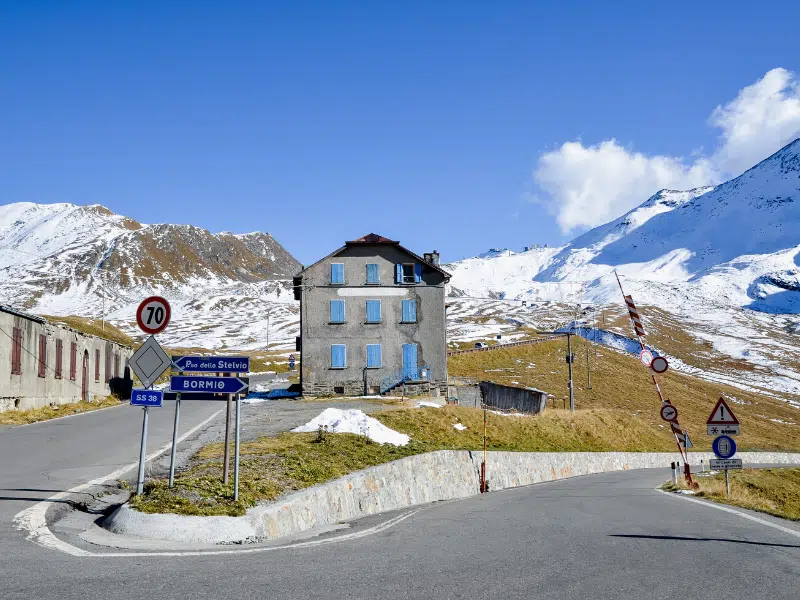
Where to Stay on the Stelvio Pass
Prato Allo Stelvio
The Saldur Small Active Hotel is just a few kilometers outside town. A good mid-range option, this family-run Alpine lodge has a good selection of rooms and lots of family choices.
Serving local and traditional food, and with a wellness suite including a sauna, Turkish bath, hot tub, and indoor pool, the hotel makes for a great overnight stay before or after a long day on the pass.
Trafoi
Hotel Bella Vista sits in prime position on hairpin bend #46, just south of Trafoi. Alongside its enviable roadside position, the charming hotel has a wonderful view down the lush Martello Valley past the Pfarrkirche Trafoi to the Church of the Sacred Three Fountains.
For the ultimate in relaxation, enjoy the view from the outdoor pool or a private hot tub!
Stelvio Pass
Right at the top of the pass, we recommend the Albergo Quarto Pirovano, a cozy lodge with a Finnish sauna, Turkish bath, and indoor swimming pool.
Just 50 meters from the nearest ski school, this is a great spot if you fancy a bit of summer snow!
Bormio
For us, there’s only one place to stay in the municipality of Bormio. Right at the start of the pass, the QC Terme Bagni Vecchi di Bormio is always a treat.
With a spa like no other including Roman baths, centuries old caves, and an outdoor panoramic pool, all fed by local spring water, Bagni Vecchi offers an extraordinary experience. Oh, and they have one of the best breakfasts we’ve ever had!
Mountain Driving Tips
Before you hit the road, make sure your vehicle is prepared for driving in the Alps. Check all your fluids and tires, but best of all, have a full service before you go.
Mountain roads are not difficult to drive, especially the well-maintained roads of Europe, but you do need to adapt your driving style and speed for steep inclines and declines, hairpin bends, and narrow roads.
As you approach a steep incline, steadily increase your speed as long as it’s safe to do so. This will give you some power for the climb.
When climbing or negotiating tight turns, use a low gear. This will reduce your speed but give you more power to get up the incline. If it sounds like your engine is laboring, drop it down another gear, but be gentle with the clutch – you’re aiming to balance revs with road speed
As you drop in altitude, don’t ride the brake, shift down a gear instead. If you notice the tell-tale overheating brake smell, pull over and let the car cool down for ten minutes, before gently pumping the brakes to make sure they’re working before heading off again.
Don’t overtake unless you have a clear view of the road ahead. Mountain passes generally have lots of areas of poor visibility and overtaking in these areas puts you and other drivers at risk.
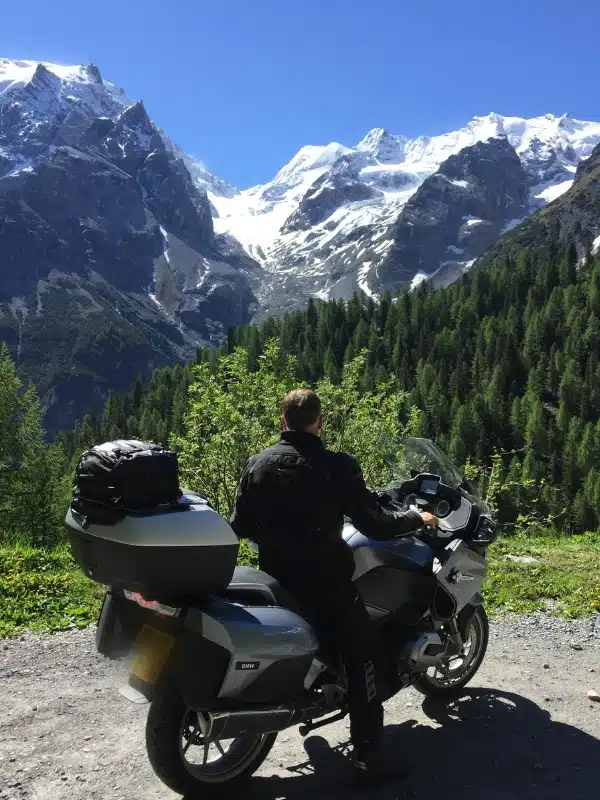
Are you looking for road trip inspiration? Check out these top posts…
European Road Trip: Six Countries in 90 Days
Norway Road Trip: Four Unmissable Routes
Germany Road Trip: 8 Unmissable Routes
The Perfect Andalucia Road Trip: 10-14 Day Itinerary
The Ultimate Bucket List Italy Road Trip
Spring Road Trip from Britain to Portugal
Love it? Pin it!
